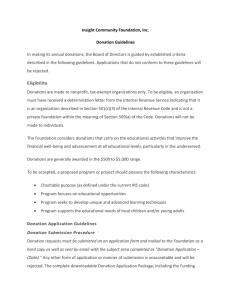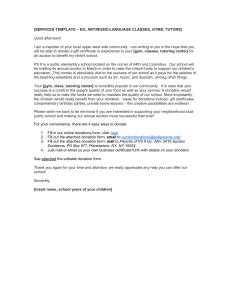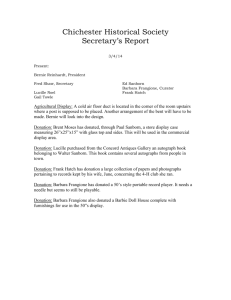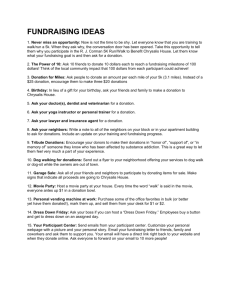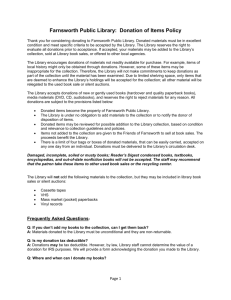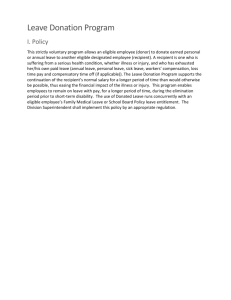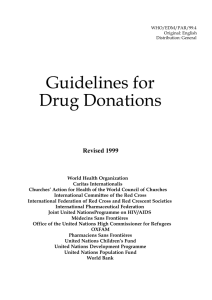Guidelines for Donating Medical Equipment and Supplies
advertisement
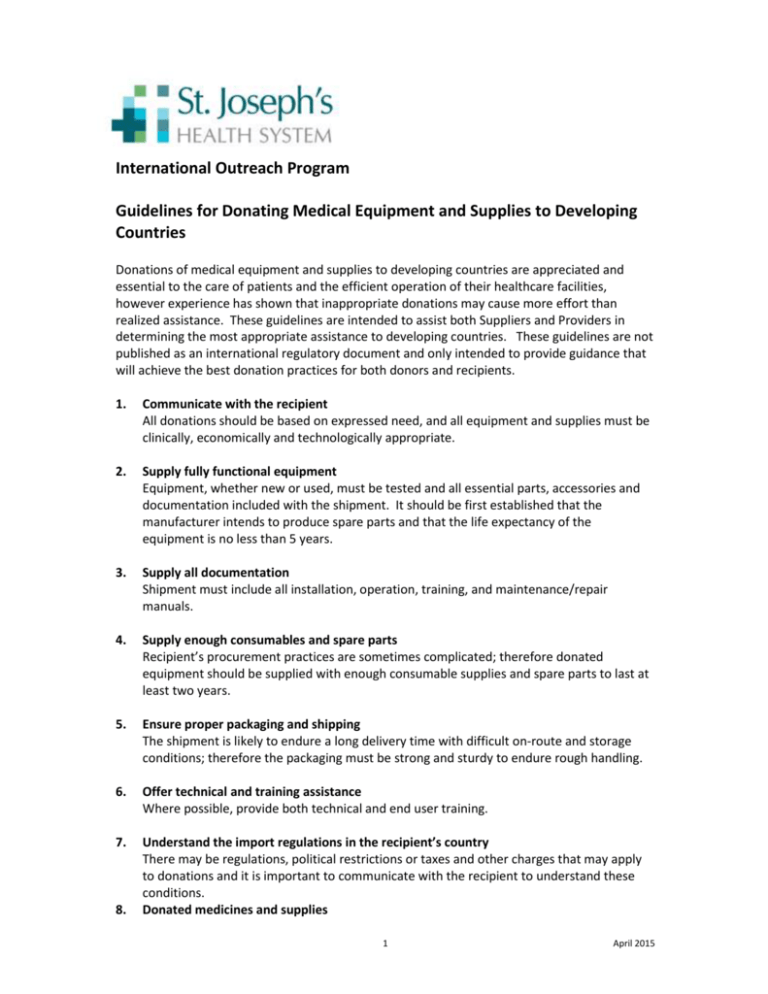
International Outreach Program Guidelines for Donating Medical Equipment and Supplies to Developing Countries Donations of medical equipment and supplies to developing countries are appreciated and essential to the care of patients and the efficient operation of their healthcare facilities, however experience has shown that inappropriate donations may cause more effort than realized assistance. These guidelines are intended to assist both Suppliers and Providers in determining the most appropriate assistance to developing countries. These guidelines are not published as an international regulatory document and only intended to provide guidance that will achieve the best donation practices for both donors and recipients. 1. Communicate with the recipient All donations should be based on expressed need, and all equipment and supplies must be clinically, economically and technologically appropriate. 2. Supply fully functional equipment Equipment, whether new or used, must be tested and all essential parts, accessories and documentation included with the shipment. It should be first established that the manufacturer intends to produce spare parts and that the life expectancy of the equipment is no less than 5 years. 3. Supply all documentation Shipment must include all installation, operation, training, and maintenance/repair manuals. 4. Supply enough consumables and spare parts Recipient’s procurement practices are sometimes complicated; therefore donated equipment should be supplied with enough consumable supplies and spare parts to last at least two years. 5. Ensure proper packaging and shipping The shipment is likely to endure a long delivery time with difficult on-route and storage conditions; therefore the packaging must be strong and sturdy to endure rough handling. 6. Offer technical and training assistance Where possible, provide both technical and end user training. 7. Understand the import regulations in the recipient’s country There may be regulations, political restrictions or taxes and other charges that may apply to donations and it is important to communicate with the recipient to understand these conditions. Donated medicines and supplies 8. 1 April 2015 All donations should be based on expressed need and unsolicited donations are discouraged If the quality of an item is unacceptable in the donor country, then it is unacceptable as a donation Dated medicine or supplies must have an expiry date not less than two years (Some consumable supplies with high usage may have shorter expiry dates, however this should be discussed with the recipient prior to shipping) Donations should be sorted and packaged appropriately to ensure efficient storage and distribution by the recipient; no mixed cases, and original packaging must be used Packaging of medicine and supplies that are considered to be sterile must be intact and not compromised Consumable supplies associated to specific equipment technology not available to the recipient must not be sent Quantities of medicines and supplies provided must be sufficient to ensure the appropriate and sustained treatment of the patients How to Donate 1. Complete the attached form and forward to: Mr. Jay Ayres, Director St. Joseph’s Health System, Group Purchasing Organization 99 Wayne Gretzky Parkway, Brantford, ON N3S 6T6 Email: jayres@sjhcs-gpo.com T: 519.751.7096 x2355 F: 519.753.8364 2. You will be contacted to discuss your donation. 3. The St. Joseph’s Health System International Outreach Program (IOP) is a registered Canadian Charity. You can support our work in Haiti or Uganda by donating online via CanadaHelps.org at: https://www.canadahelps.org/en/charities/st-josephs-healthsystem-international-outreach-program/ or by mailing a cheque to: SJHS-IOP c/o St. Joseph’s Villa, 56 Governor's Road, Dundas, ON L9H 5G7. Ours is a volunteer-driven organization and as such, 100% of your donation will go to our international projects. References: World Health Organization, Guidelines for Medicine Donations, Revised 2010 World Council of Churches (WCC), Guidelines in Medical Equipment Donation Clinical Engineering Handbook, edited by Joseph F. Dyro 2 April 2015 International Outreach Program Medical Equipment and Supplies Donation Form In order to determine the suitability of the equipment and supplies to be donated, please provide the following information: 1. Contact Information: Name of Company or Organization Donating Goods: Address: Primary Contact: Telephone Number: Email Address: 2. Description of Equipment or Supplies to be Donated (please included the following information): What is the condition of the equipment and/or supplies to be donated? Is the equipment in good working condition? What consumable supplies and ongoing maintenance/service items are needed to operate the equipment? Are the supplies still in there original packaging? What is the age of the equipment and/or supplies? Is there an expiry date on the supplies, if so what? What is the quantity? Are spare parts available and is the equipment still supported by the manufacturer? Will service and training manuals be included? 3. Current location of Goods to be Donated: 4. We would like to track your equipment/supplies donation offer on a donor list and contact you periodically should a specific need come up, are you in agreement with this? Yes _____ No______. Forward Completed Form to: Mr. Jay Ayres, Director St. Joseph’s Health System, Group Purchasing Organization 99 Wayne Gretzky Parkway, Brantford, ON N3S 6T6 Email: jayres@sjhcs-gpo.com T: 519.751.7096 x2355 F: 519.753.8364 3 April 2015

